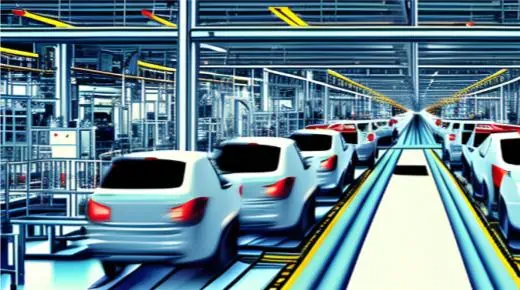United Auto Workers (UAW)
In a powerful display of unity and resolve, thousands of members of the United Auto Workers (UAW) at Ford, General Motors (GM), and Stellantis commenced the Stand Up Strike, echoing the historic Sit-Down Strikes of 1937 that laid the foundation for the labour movement. The strike, which began at midnight last Friday, seeks to confront rising inequality within society, particularly as the automotive industry undergoes rapid transformation, leaving workers struggling to keep pace.
The catalyst for this significant labour action was the failure of UAW leaders to reach an agreement on a new contract with the three major automakers. At the outset, the UAW demanded an ambitious 46% pay raise spread over four years. However, after negotiations, the union has revised its request to a 36% wage increase. This revised proposal would translate into an immediate 18% pay hike, followed by annual increments of 4% or 5% throughout the contract, according to Garrett Nelson, an automotive analyst at CFRA Research.
The UAW’s list of demands extends beyond wage increases. The union is advocating for pension benefits to be extended to all employees, a reduction in the use of temporary workers, increased paid time off, including the introduction of a four-day workweek, and enhanced job protections, notably the right to strike in response to plant closures.
Abolish the two-tiered pay system
Furthermore, the UAW is determined to abolish the two-tiered pay system currently in place at Ford, GM, and Stellantis. This system has drawn criticism from members who view it as discriminatory, relegating some of their colleagues to second-class status. Currently, higher-tier workers, those who joined the companies before 2007, earn approximately $33 per hour, while lower-tier employees, who joined after that year, earn around $17 per hour. Lower-tier workers also do not receive defined benefit pensions, and their health benefits are less comprehensive.
The consequences of this strike are far-reaching. It has the potential to drive up car prices and is predicted to result in estimated economic losses of $5.6 billion for the automakers, as forecasted by some experts. Additionally, it could lead to a reduction in the nation’s GDP by as much as 0.3%, according to Oxford Economics.
As the Stand Up Strike gains momentum, it serves as a poignant reminder of the labour movement’s enduring spirit, echoing the historic battles fought by autoworkers in the past. The UAW’s unwavering commitment to addressing inequality and securing better working conditions for its members underscores the vital role unions play in shaping the future of American industry and labour. The outcome of this strike will undoubtedly have profound implications for the automotive industry and the broader labour landscape.
